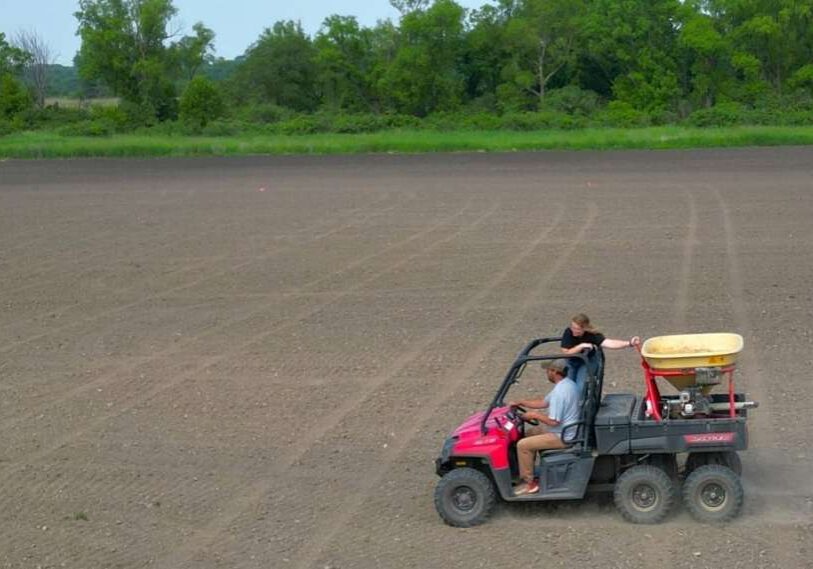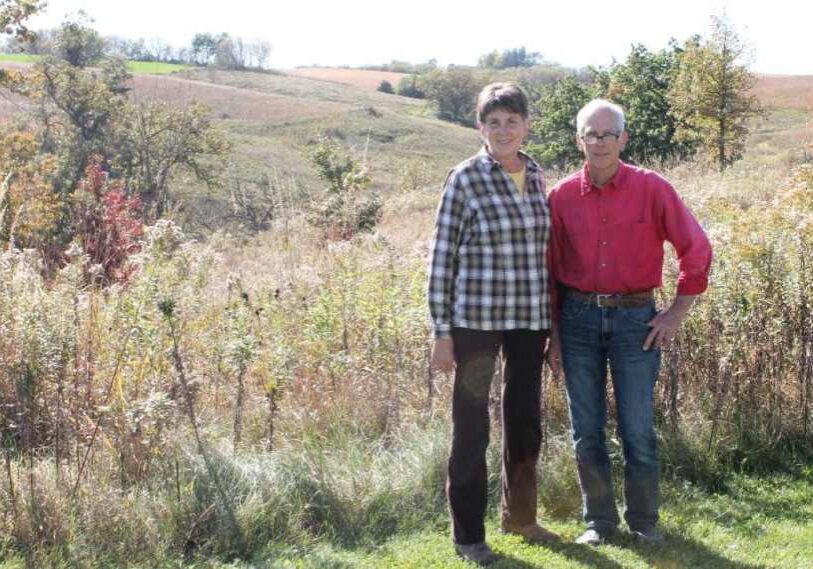Swan Lake — Thousands of Tundra Swans Migrate Each Autumn

BROWNSVILLE — Each fall, hundreds of millions of birds flee winter, using the Mississippi River corridor to migrate from northern breeding grounds to southern wintering grounds. And each fall, tiny Brownsville, ends up as an epicenter of this monumental phenomenon.
“More than 2,300 miles long with a watershed of more than 1.5 million square miles, the Mississippi River is North America’s greatest waterway and the most heavily used migration corridor for waterfowl and other birds,” according to Ducks Unlimited. The National Audubon Society estimates 325 species use the flyway.
The movement is reversed in spring, but then the birds are eager to head farther north to breeding grounds. In fall, they sometimes lollygag, with many waterfowl waiting for winter to seal the water.
The migration starts in late summer or very early fall, with smaller birds like warblers. The final act of this incredible movement is the boldest, the grandest. It’s when tens of thousands of large white swans, mostly tundra with a few trumpeters, fly south with winter nipping at their tail feathers.
In early to mid November, Brownsville, population 566 at the 2020 census, takes center stage. It’s near there, south of the Lawrence Lake area, that the swans come to shatter the day and night with their calling, feast on food the river has grown all summer, and rest before flying farther south. For many years, Weaver Bottoms south of Wabasha tended to get the most swans. It’s filling in so swans moved to Riecks Lake near Alma, Wis. Now, it’s Brownsville and eastern Houston County.
Fortunately for birders and wildlife lovers, there are two wayside pull-offs a few miles south of Brownsville along Minnesota 26, the larger one farther north, the smaller maybe a mile away. Most of the swans are a mile or more away from the highway, too far for binoculars. But a smaller area next to the road attracts several hundred swans, mallards, geese and a few other kinds of waterfowl that rest, eat and make a racket.

A flock of tundra swans prepares to land at Weaver Bottoms, along the Mississippi River south of Wabasha.
Migratory staging areas
In mid to late October, Jennifer Froehly knows she will get calls: are the swans here yet? I called in late October. “You were the first swan call of the year,” said the biologist for the US Fish and Wildlife Service (FWS) in Winona. “I’ve been waiting for the calls for ‘when are the swans going to be here?” she said. When I called, maybe only 50 had shown up, but by the first few days of November, friends were posting pictures of several hundred at Weaver. (Visiting the FWS Web site is the best way to get updates on the migration.)
While she studies them professionally, she also loves them personally, especially the noise. “The cacophony of the trumpeter swans, (is) a very special experience,” she said. At times, the Brownsville area will have up to 20,000 swans with a mixture of smaller waterfowl like mallards and canvasbacks.
Stephen Winter, a FWS biologist for the whole refuge that extends along the river 261 miles from Wabasha into Illinois, said tundra swans nest in a wide swath of the Arctic area from Canada to Alaska and a few into Russia. When they do come down here, some turn west and others east to the Chesapeake Bay area. While they need good food and other habitat in breeding and wintering grounds “they also need good migratory staging areas, that’s where we come in,” he said.
Before the river was dammed, mostly in the 1930s, turning the river into a series of pools often with large backwaters on their sides, swans stopped at other places like smaller lakes, he said. “They hardly used the river, if at all,” he said. When backwaters blossomed after dams were closed, canvasbacks quickly found them to their migratory liking but swans were more traditionalists, he said.
Finally, they found the river and their numbers slowly built up over the decades. Exactly how many swans do fly through is hard to know because they come and go. But there could be 30,000 or more at their maximum, he said.

Several swans prepare to land amid many other swans near Brownsville. Each fall, swan family groups merge into flocks of around 100 and fly 4,000 miles to wintering grounds.
A traveler’s smorgasbord
Besides many square miles of open water they also found arrowhead. It grows in large patches across the backwaters, its large arrowhead-shaped leaves very prominent. Swans could care less about the leaves, however. They love the tubers that grow in the soft Mississippi mud. They use their large feet to kick around in the mud, dislodging tubers, then tipping head down into the water with their long necks and getting food.
“They (tubers) are large packets of carbohydrates,” Winter said. “They can build up the fat supply.” Cygnets, the young birds, also need the food to grow,” he said.
Fortunately, “we have really good conditions in a lot of those pools on the Upper Mississippi,” he said. “Once the arrowhead supply dwindles, they will eat water celery that canvasbacks just love.”
In the 1990s, for reasons not perfectly understood, much of the backwater-submerged vegetation died off, leaving little for migrating waterfowl. In those times, they probably dispersed to other places. Now they are back.
Tundra and trumpeter swans are hard to tell apart just looking at them. But hearing them is a giveaway. Think of trumpeters as having a nasally honking (I think of them as geese with sore throats) while tundras have a hard-to-describe sound often called gabbling (it’s kind of a garbled sound).
Winter said he loved waterfowl from when he was in grade school and that has continued. Even after seeing so many so often, he relishes them. “No, no, that’s the thing, I never get tired of them,” he said.

Two swans fly away from the opening near the Minnesota Highway 26 overlook near Brownsville. Tundra swans are monogamous, pairing for life.
Bird watcher destination
The center stage for the final act can get a large audience. At their peak (that depends totally on weather), they attract hundreds of people each weekend day to the overlooks, especially the upper one where a FWS official will be there at certain times to explain more about the migration and let people use spotting scopes.
Most of the people are from the Midwest, from the Twin Cities, La Crosse and western Wisconsin, and Iowa, said Katie Julian, visitor service specialist with the refuge’s La Crosse District. But at times, she has met people from Kentucky. It’s one of the few places in the country where you can see such a concentration of swans, she said.
She has an interesting perspective on those swans. “The tundra swans remind me of a party,” she said. “They are super vocal when they are on the water. It’s an exciting sound to hear … the celebration of life is something pretty unique to see in the fall.”
When she watches them, she’s seeing a part of their annual cycle because migration is a part of the biological pattern that has been part of nature for eons, she said; “It’s a pretty significant passage for them … they have lots of challenges in the migration route.”
Fun facts about swans:






